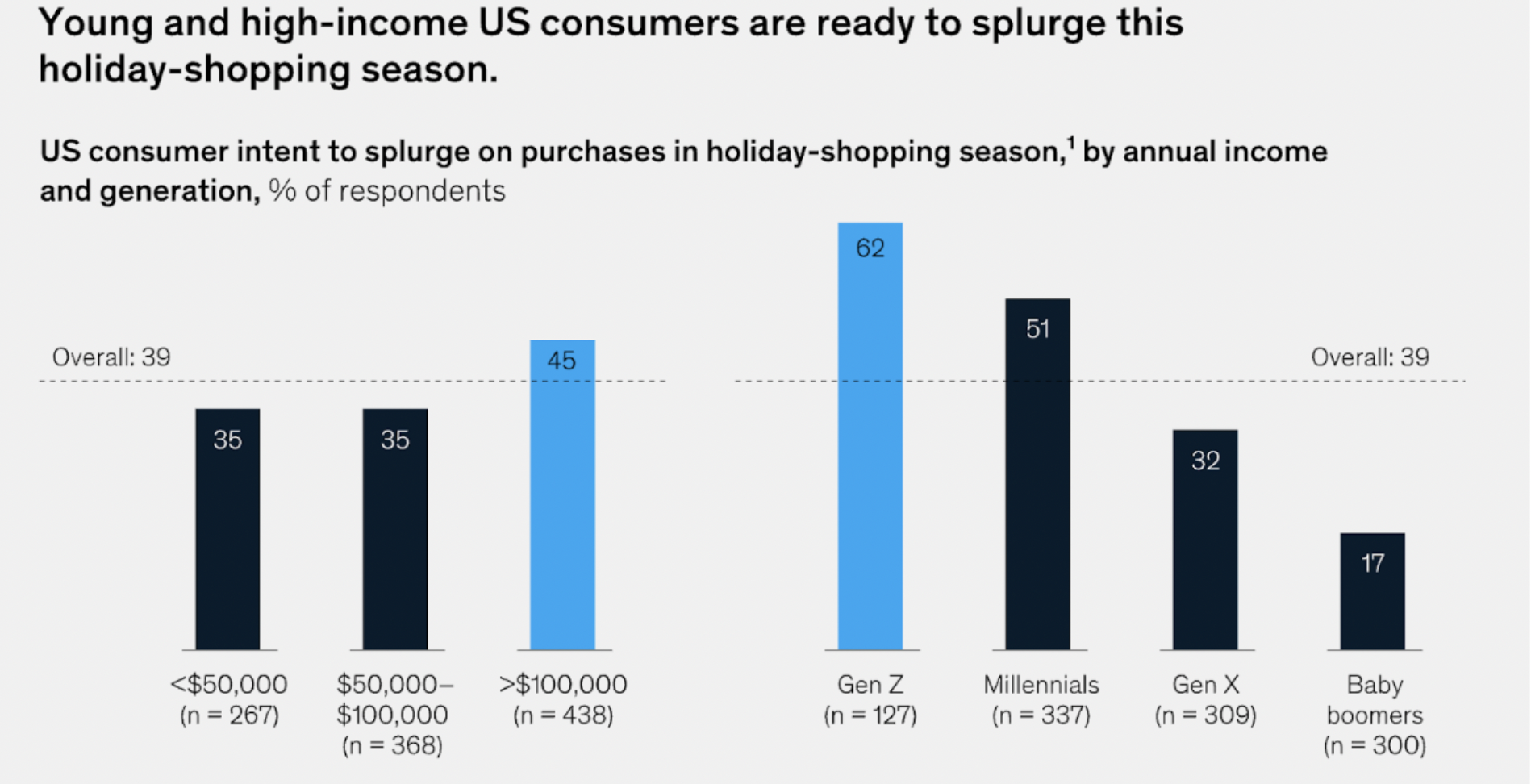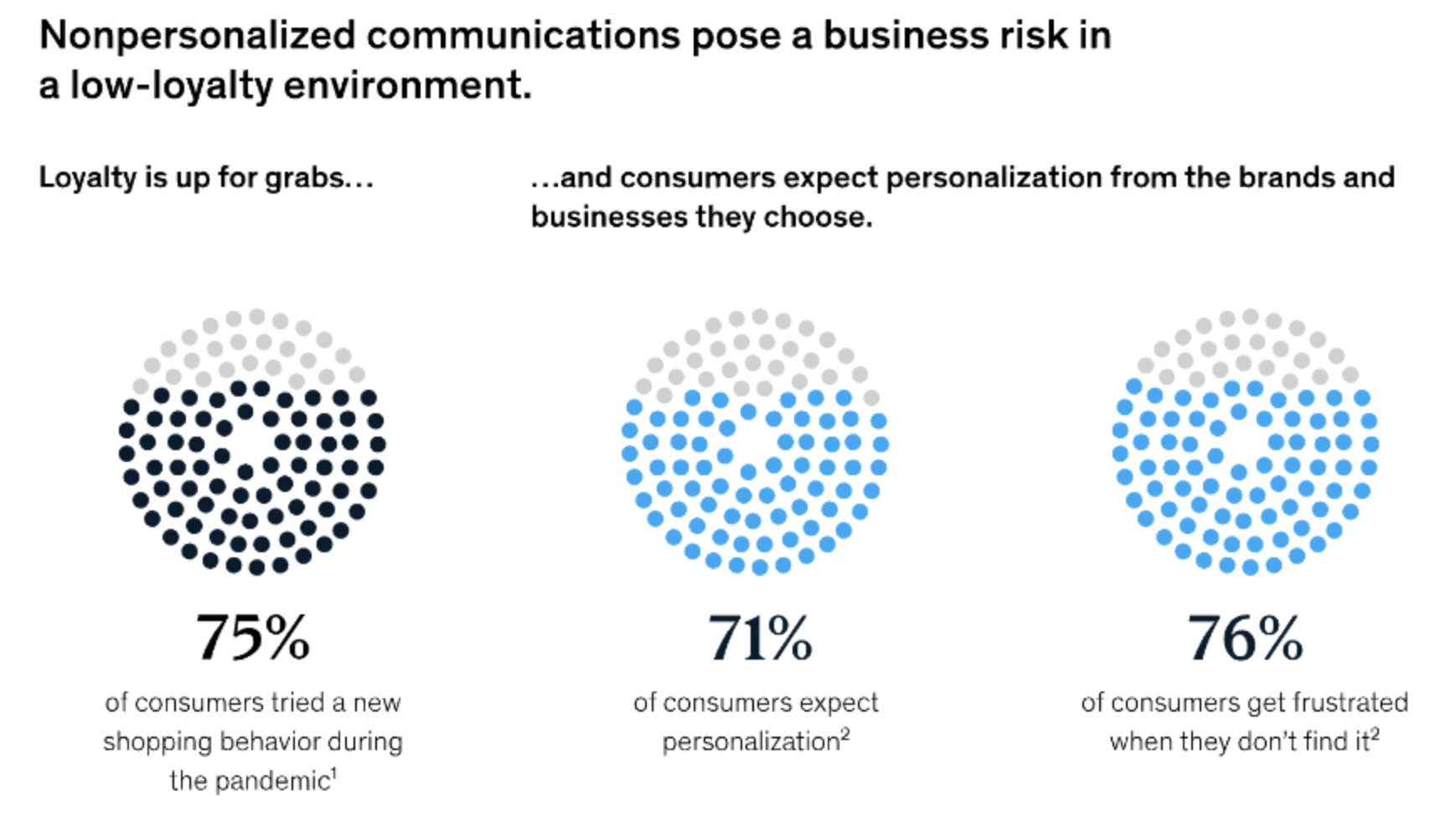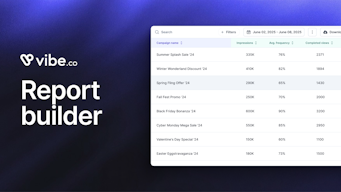Ultimate 2023 CTV Holiday Marketing Guide
Alright soldier, we’re not gonna lie to you because you already know the deal: Q4 is going to be intense, and this year it’s also going to be… sort of weird? But that’s ok. You know why? Because knowledge is power and we have so. much. information for you!
We all know the holidays are where sales goals and marketing budgets get their biggest bumps, and with reason: on average, Q4 accounts for over a quarter (26.8%) of total annual retail sales, and over a half (57%) of retailers expect to see an increase in sales during this period every year.
While this year is predicted to see record sales (as Q4 always does), consumer shopping patterns are shifting. Don’t worry, a recent McKinsey study actually reported higher holiday-spending enthusiasm from consumers than they’ve seen in years, but their spending patterns will be different and marketers need to meet them where they are. This year, shoppers will:
- Start shopping earlier
- Spend in a “flatter” pattern, with fewer peaks and valleys and less concentrated ad spending during the Cyber Five period (Thanksgiving through Cyber Monday).
- Rely more heavily on personalized campaigns
- Be especially susceptible to varied, flexible, localized promotions
Let’s take a closer look.
Holiday shoppers are excited… but need to be wooed
1. Shifting spending habits
Despite the doom and gloom economic picture we keep getting hit over the head with, US consumers have spent the past few years building up a sizable nest egg they are eager to spend this holiday season. Indeed, as people pulled back on spending throughout the COVID-19 pandemic and received stimulus checks from the government, their savings went up, and that trend continues. US families have added more than $4 trillion to their coffers since late 2020. Case in point: more than half of recently surveyed customers say they are excited for the shopping season, up from around one-third last year.

Source: https://www.mckinsey.com/capabilities/growth-marketing-and-sales/our-insights/us-holiday-shopping-2022-tis-the-season-to-be-cautiously-optimistic
According to McKinsey’s most recent holiday report, the uptick in overall holiday spirit is reflected across all US income and age groups, with low- and medium-income consumers each seeing a 21-percentage-point increase in optimism, baby boomers’ rate of optimism more than doubling since 2021, and higher-income and younger consumers being especially excited, with around two-thirds eager or excited for the holidays.
Meanwhile, retail and e-commerce sales are set to grow by 3.3% this year to a total $1.3 trillion in spend. And, for the first time ever, brick and mortar stores sales grew faster last year (18.5%) than e-commerce (14.2%) and are expected to represent 81% of total sales this quarter, while the week of Black Friday should see sales grow 16% compared to 2022, aided by more consumers willing to shop in-store.
That’s great news overall, but it also means strategies that worked well for the last few years may need some serious rethinking.
2. Shoppers expect to be courted
With the rise of digital programmatic advertising and the exponential growth of retail marketing success brought on by two years of confinement, the holiday marketing clamor can be deafening. Today more than ever, holiday and MSD (Mega Sale Day) shoppers want to be entertained and inspired by ad experiences that are tailored to them as individuals… and they want that courting to start early.
According to the National Retail Federation, 61% of consumers started shopping in early November last year, and shopping is predicted to begin even earlier this year, due to concerns around supply chain issues and further inflation. With shoppers having finished more than half their purchases by the end of November, running campaigns before Black Friday has become non-negotiable.
Because campaigns will need to start early, marketers must ensure they are working with partners who can launch quickly and reliably, while allowing for frequent iteration to keep ads fresh over the course of a 2 to 3 month advertising marathon.
Flexibility will be especially important as shoppers expect increasingly relevant and customized touch points with their brands of choice: 71% of consumers - to be exact - recently reported they “expected companies to deliver personalized interactions,” while 76% “got frustrated when this doesn’t happen.”

https://www.mckinsey.com/capabilities/growth-marketing-and-sales/our-insights/the-value-of-getting-personalization-right-or-wrong-is-multiplying
At this point in the digital marketing revolution, it’s not about if you’ll create custom campaigns targeted by audience segment, it’s a question of how well. Personalization is not only a crucial capability, it’s one that will exponentially affect your bottom line, whether your company is a digital native, a brick-and-mortar player, or a behind-the-scenes producer or supplier. In fact, according to Digiday, companies that grow faster drive 40% more of their revenue from personalization than their slower-growing counterparts.
How CTV will help you meet the holiday challenge
It’s become cliché at this point to tell marketers that they’re already late to the party if they haven’t started planning their holiday campaign strategy by the flippin’ 4th of July. But as we can all attest to, well, sh** happens, and whether you’re behind because of staff shortages, unanticipated signal loss in traditional digital channels, or just need to update strategies that already feel stale, programmatic CTV offers an agile set of features that can assist your team in launching targeted, relevant campaigns in minutes.
Bringing together the impact of long-form, premium television content with the targeting capabilities of digital, CTV advertising will be an especially important channel for marketers trying to cut through the holiday noise this season. Not only do Connected Television audiences clock-in a whopping 97% View Through Rate (VTR), but 96% of them report watching CTV programming with their phone in their hands, pushing television advertising from a brand awareness channel to an increasingly powerful performance tool.
Meanwhile, thanks to the magic (or what feels like magic) of Household IP targeting, advertisers can find and track audiences by interest, demographic segment, context, geolocation, and more, all in a privacy-compliant environment!
Let’s take a closer look at CTV’s most exciting features specifically with regard to a holiday campaign.
1. Flexibility
As we mentioned earlier, time is of the essence for advertisers desperately pushing ad dollars through every imaginable channel and praying for maybe one day off at some point in the season; which is why a nimble tool with lightning-fast launch capabilities is so important.
Because programmatic CTV campaigns can launch and report results instantly, advertisers are able to incrementally adjust their ads to better match shifting consumer preferences, macro political issues, viral trends, or anything else that could unpredictably affect consumer behavior. Beyond flexibility, the sheer speed of campaign buys has been found to increase targeted audience reach by over 30%!
Launch speed is also important as real-time results start pouring in and targeting insights begin to form. A self-serve programmatic CTV platform like Vibe.co allows advertisers to edit, segment, and refine ad sets in real time, which becomes increasingly important for a late holiday push to optimize messaging and direct buyers to gifts that are still available.
2. Customization and localization
Whether you’re using your own 1st party data, purchasing audience lookalikes, or using the segments available through a CTV DSP partnership, a good CTV advertising platform will allow your team to create variations on ads with customized messaging, providing customized, engaging experiences for audiences that resonate more meaningfully. For example, advertisers can localize an ad with scannable QR codes, nearest location, inventory availability and more, adding a much-needed extra layer of ad relevance for local shoppers.
And remember, make sure to work with a partner who will allow you to modify and update your campaign as it’s running at no additional cost. The CTV revolution is meant to radically improve upon clunky linear TV ad buying. If your platform can’t do that, it’s time to look for a replacement!
3. Performance
Speaking of TV revolution, a renewed focus on performance marketing in the television ad industry is probably its most revolutionary development to date!
Here at Vibe.co, we’ve always looked at CTV as a performance channel and recent market accelerations are making the case even clearer. By “performance channel,” we mean one that delivers clear, trackable outcomes affecting your bottom line.
The evolution in CTV targeting allows advertisers to reach precise, in-market audiences. Brands and retailers can blend mass reach with in-market intender targeting to reach viewers throughout the funnel — or find relevant audiences by specific behaviors and interests. With this approach, advertisers can use precise data options to find their intended buying audience, and track conversions with pixels and/or MMPs (Mobile Measurement Partners).
4. Scale
Of course all of these exciting features are useless if the solution can’t scale, and until a few years ago CTV advertising scale would have been a valid concern, but today smart TV manufacturers, publishers, and streaming services are aggregating content that can’t be accessed elsewhere and making it highly discoverable, massively simplifying campaign targeting and delivery.
Meanwhile, on the audience side, demand is booming. AVOD is the fastest growing model in the fastest growing digital channel (CTV) while SVOD is a saturated market that’s hitting a serious plateau. That’s why Vibe.co offers programmatic delivery focused on performance, so clients can scale their campaigns and optimize their CPMs.
5. An accessible solution
Granted, CTV advertising is, for all intents and purposes, television advertising, but because it is delivered according to a digital model, its cost and overall campaign creation are much more similar to what you have probably experienced with Google Ads or Meta Business Suite than to upfront network buying. Vibe.co doesn’t require any money down, with average CPMs running between $10 and $20, so businesses of all sizes can finally afford television advertising in a targeted, radically transparent way.
Optimize your holiday CTV campaign
1. Customize your discount strategy
As enthusiastic as shoppers seem this season (and surprisingly, they are!), they are also more discerning, beginning to shop earlier so they have time to compare prices, ensure on-time delivery, or spot layaway offers. The key here will be to identify different promotion types meant to appeal to your key target segments and test aggressively. While Q4 may not feel like the time to try new things, the agility of CTV testing allows marketers to hone in what their audiences are actually responding to in real time - don’t miss it!
Recently successful promotions and valued features have included:
- Buy-now-pay-later: Six out of 10 shoppers would like to use BNPL as a payment option and are more interested in making a purchase at stores that offer it - audiences this year will be more likely to convert with brands that spend more time highlighting deals than product features.
- On time delivery: We’ve all been burned by the supply chain nightmares of the last few years, so brands that can guarantee on-time delivery should prominently highlight it for as long as possible - consumers will be looking for it.
- Digital gift cards: Once that coveted on-time delivery deadline passes, switch out your creative to highlight digital gift cards, allaying concerns about shipping times — a valuable revenue boost ahead of Christmas and New Year’s Eve.
But above all else, remember that brand interactions are especially impactful during high-stress, high-spend times, so make sure to remain true to brand in the midst of holiday experimentation. Consider the trade-offs between the holiday frenzy and the longer-term potential impact of any changes on brand image and overall profitability. Understanding details on customer acquisition during the holidays and deploying customer-relationship-management tactics soon after the holidays will help brands retain loyalty, which is especially important now that the holiday buying season extends well into January.
2. Match your promotions to the holiday sales calendar
Since every weekday immediately leading up to Black Friday ranks high for verified visits, load up your creative and messaging with pre-Black Friday deals to capture shoppers with a deal too good to pass up, and if you have a new offer for Cyber Monday vs. Black Friday, update your creative to reflect that to grab audience attention.
Overall, analysts predict that Black Friday week sales will increase by 16% vs 2022, aided by more consumers excited to shop in-store. Meanwhile, cyber week, should see an online sales increase of 14%, although omni-channel purchases will only increase by 6%. Over the entire holiday period, they forecast only a slight difference between online (+12%) and in-store sales (+10%), so make sure you are deploying creative highlighting both options.


